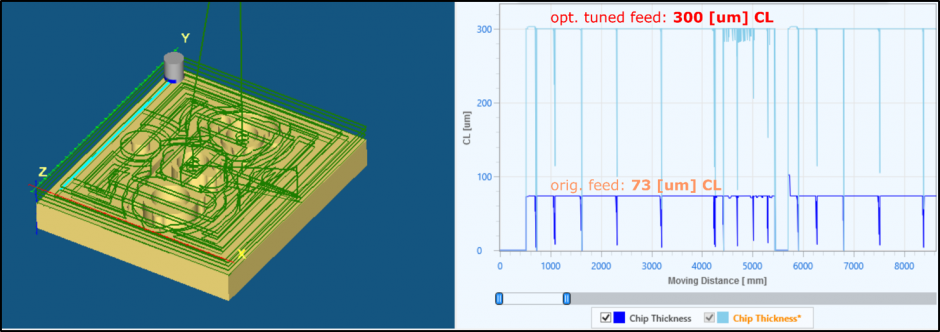Examples of research projects which utilize digital twin technology include:
Machining optimization
A NC program can be simulated under a digital twin which considers machining physics to generate accurate predictions of cutting force, torque, and vibration. Toolpath optimization is then performed to realize optimal feed rates without exceeding the limits of the machine tool. For example, feed rates can be tuned to maintain an optimal chip load for a toolpath with varying cut geometry.


Tool breakage detection
The breakage of a cutting tool can be detected by continuously monitoring the cutting torque evaluated from the spindle motor current. While tool breakage can be assumed in the occurrence of abnormal torque, this is a naïve solution from which false breakage alarms can be triggered by transient changes of the cut geometry. The implementation of a digital twin mitigates such concern by establishing an adaptive tool breakage alarm that is sensitive to variations of the cut geometry in a real part machining environment.
Chatter detection
Chatter is an unstable vibration which is detrimental in a machining process. The detection of chatter is nontrivial in real part production as the separation between air-cut and in-cut can be difficult, especially for operations with small cutter-workpiece engagement. Here, a digital twin can be used to simulate the cutter-workpiece engagement throughout an entire production process. Such information is provided to the chatter detection algorithm and improves its robustness in the differentiation between air-cut and in-cut components.